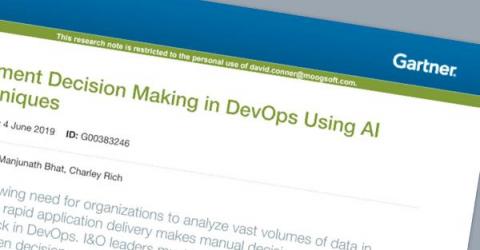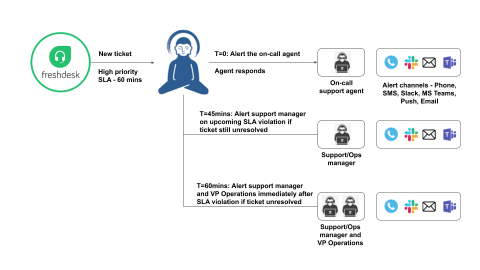Operations | Monitoring | ITSM | DevOps | Cloud
Latest News
PagerDuty Recognized in G2's Annual Best Software Awards
G2, the largest software marketplace and review platform, recently announced the 2020 winners of its annual Best Software Awards, which recognizes 100 companies globally—and PagerDuty is thrilled to be named the leader in the Best Incident Management category.
What's New: Related Incidents, Business Response, Mobile Status Dashboard, & New Integrations
An always-on world requires a proactive and preventative approach to managing your digital operations. PagerDuty is proud to announce our latest release, which helps streamline remote remediation by providing an at-a-glance overview of your system’s health. While we’re known for on-call management and incident response, PagerDuty does much more, including providing visibility into the business impact of an incident.
Extracting Insights from Metrics with AIOps for Better Observability
In this second installment of this blog series, we’ll discuss the importance of analyzing metrics, and how AIOps helps you with this fundamental pillar of observability. Without proper metrics analysis, you’re left blind to potential outages, or possibly worse — inundated with false positive anomalies, leading to alert fatigue and ultimately business impacts. Automated discovery and analysis can’t be achieved with legacy tools nor will it scale with humans.
Advice for On-call Teams During COVID-19
I’ve offered some tips up for folks who are oncall during the COVID-19 crisis, but I thought it would be helpful to get some more ideas from people with different perspectives. So I reached out to some people I trust to see what they had to say. They all have different viewpoints, but some themes emerge, like managing alerts, having empathy, and practicing self-care. The participants, in alphabetical order: Aaron Aldrich is a Developer Advocate at LaunchDarkly, with a focus on DevOps.
IT Teams Under "High Stress" Resolving Faster Than Ever Before
Seemingly simple digital moments, like checking into a flight, trigger a complex technical flow of events under the IT covers. A simple swipe or click relies on a complex IT ecosystem made up of millions of lines of code, spanning multiple software applications, hybrid and multi-cloud technologies, state-of-the-art IT infrastructure, security apps, and more.
Modern ITSM Solutions: Flexibility in Incident Response
We no longer live in a world where a few tools determine the way organizations structure their processes. From IT Service Delivery to Incident Response, Modern IT Operation Solutions need to embody the flexibility that most Enterprises require. The dynamic ITOps ecosystem has shifted to put choice back in the hands of the user. Now, IT Solutions must follow suit. Modern Incident Response platforms, in particular, need the flexibility that enterprises need to mirror their enterprise architecture.
Remove Manual Bottlenecks in DevOps with AIOps
DevOps pipelines generate massive amounts of data. To maintain the stability and speed of application delivery, operations leaders must analyze it quickly and continuously. But how can they keep DevOps — and their business — agile? Gartner’s “Augment Decision Making in DevOps Using AI Techniques” provides, in our view, the answer for operations leaders to make precise data-driven decisions and automate actions for rapid application delivery.
Getting SRE Buy-in from a VP or Director for Automated Metrics and Continuous Learning, Part 2
Meeting customer support SLAs on Freshdesk using proactive alerting and escalations with Zenduty
As businesses close more deals and add more accounts, it is still imperative for businesses to maintain their SLA levels and resolve customer support tickets within SLA timeframes. Having a solid support team is great, but supporting hundreds or thousands of users in the most efficient, cost-effective way while maintaining SLAs continues to be a challenge for the majority of companies. An SLA policy ( service level agreement) lets you set standards of performance for your support team.











